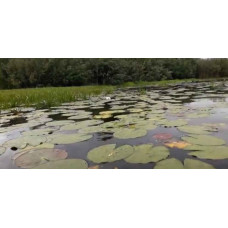The totality of plants, fungi, micro-organisms and animals that inhabit a given area (water body, section of water body). It is characterised by a specific composition of species, interdependence between them and adaptation to environmental conditions. The term "biocenosis" was coined in 1877 by the German hydrobiologist K. Möbius.
Biocenoses arise from the biogenic cycle and provide it under specific natural conditions. A biocenosis is a dynamic, self-regulating system whose components (producers, consumers, decomposers) are interconnected. It is one of the main objects of research in ecology.
The most important quantitative indicators of biocenoses are biodiversity (the total number of species in them) and biomass (the total mass of all species of living organisms in a given biocenosis).
Biodiversity is responsible for the balance of an ecosystem and therefore its sustainability. The closed nutrient cycle is only possible because of biodiversity. Substances that are not assimilated by some organisms are assimilated by others, so that the loss of nutrients from the ecosystem is small and their constant presence ensures the equilibrium of the ecosystem.
Types of biocenosis structures: species, spatial (vertical (longitudinal) and horizontal (mosaic) organisation of the biocenosis) and trophic.
Groups of organisms of different sizes live in biocenoses on different scales of space and time. For example, the life cycle of a single-celled organism may last less than an hour, while the life cycle of a large plant or animal may last dozens of years.
Biotopes are characterised by a certain diversity of species - the totality of the populations that make up the biotope. The number of species depends on the longevity, climate persistence and productivity of the biocenosis type (desert, tropical forest).
The number of individuals of different species varies, etc. The most abundant species in a biotope is called the dominant species. When studying large habitats, it is not possible to determine the total number of species. For the study, the number of species in a given area is determined - the species richness. The species diversity of different biocenoses is compared with the species richness of the same area.
Species structure gives an indication of the qualitative composition of the biocenosis. When two species exist together in a homogeneous environment under constant conditions, one will be completely displaced by the other. A competitive relationship is established. Based on such observations, the principle of competitive exclusion, or Gause's principle, was formulated.
Human activities are severely reducing the diversity of natural communities, which requires prediction and anticipation of impacts, as well as effective measures to conserve natural systems.
Biocenosis
Tags: Biocenosis

